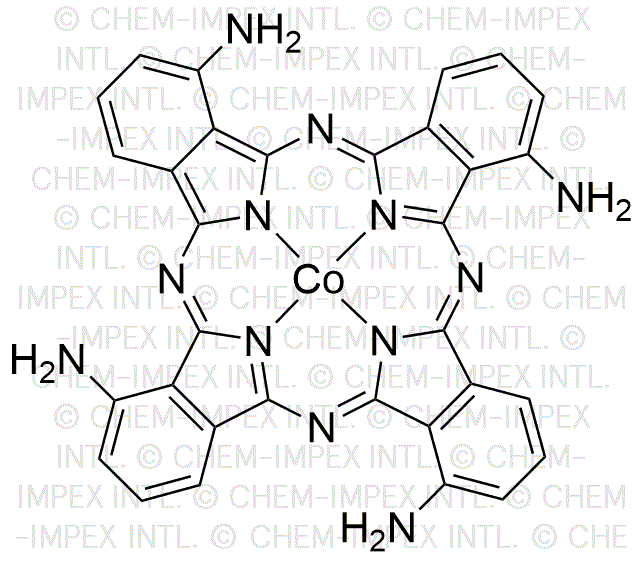Cobalt(II) 1,8,15,22-tetra(amino)phthalocyanine is widely utilized in research focused on:
- Catalysis: This compound serves as an effective catalyst in various chemical reactions, particularly in the synthesis of organic compounds, enhancing reaction rates and selectivity.
- Electrochemical Applications: It is used in the development of electrochemical sensors and batteries, where it improves charge storage capacity and efficiency, making it valuable in energy storage technologies.
- Photodynamic Therapy: In the medical field, this compound has potential applications in photodynamic therapy for cancer treatment, where it can selectively target and destroy cancer cells upon light activation.
- Dyes and Pigments: It is employed in the production of dyes and pigments, particularly in the textile and printing industries, due to its vibrant color and stability under various conditions.
- Nanotechnology: The compound is explored in nanotechnology for creating nanomaterials with unique properties, which can be used in drug delivery systems and advanced materials.
General Information
Properties
Safety and Regulations
Applications
Cobalt(II) 1,8,15,22-tetra(amino)phthalocyanine is widely utilized in research focused on:
- Catalysis: This compound serves as an effective catalyst in various chemical reactions, particularly in the synthesis of organic compounds, enhancing reaction rates and selectivity.
- Electrochemical Applications: It is used in the development of electrochemical sensors and batteries, where it improves charge storage capacity and efficiency, making it valuable in energy storage technologies.
- Photodynamic Therapy: In the medical field, this compound has potential applications in photodynamic therapy for cancer treatment, where it can selectively target and destroy cancer cells upon light activation.
- Dyes and Pigments: It is employed in the production of dyes and pigments, particularly in the textile and printing industries, due to its vibrant color and stability under various conditions.
- Nanotechnology: The compound is explored in nanotechnology for creating nanomaterials with unique properties, which can be used in drug delivery systems and advanced materials.
Documents
Safety Data Sheets (SDS)
The SDS provides comprehensive safety information on handling, storage, and disposal of the product.
Product Specification (PS)
The PS provides a comprehensive breakdown of the product’s properties, including chemical composition, physical state, purity, and storage requirements. It also details acceptable quality ranges and the product's intended applications.
Certificates of Analysis (COA)
Search for Certificates of Analysis (COA) by entering the products Lot Number. Lot and Batch Numbers can be found on a product’s label following the words ‘Lot’ or ‘Batch’.
Número de catálogo
Número de lote/lote
Certificates Of Origin (COO)
This COO confirms the country where the product was manufactured, and also details the materials and components used in it and whether it is derived from natural, synthetic, or other specific sources. This certificate may be required for customs, trade, and regulatory compliance.
Número de catálogo
Número de lote/lote
Safety Data Sheets (SDS)
The SDS provides comprehensive safety information on handling, storage, and disposal of the product.
DownloadProduct Specification (PS)
The PS provides a comprehensive breakdown of the product’s properties, including chemical composition, physical state, purity, and storage requirements. It also details acceptable quality ranges and the product's intended applications.
DownloadCertificates of Analysis (COA)
Search for Certificates of Analysis (COA) by entering the products Lot Number. Lot and Batch Numbers can be found on a product’s label following the words ‘Lot’ or ‘Batch’.
Número de catálogo
Número de lote/lote
Certificates Of Origin (COO)
This COO confirms the country where the product was manufactured, and also details the materials and components used in it and whether it is derived from natural, synthetic, or other specific sources. This certificate may be required for customs, trade, and regulatory compliance.


